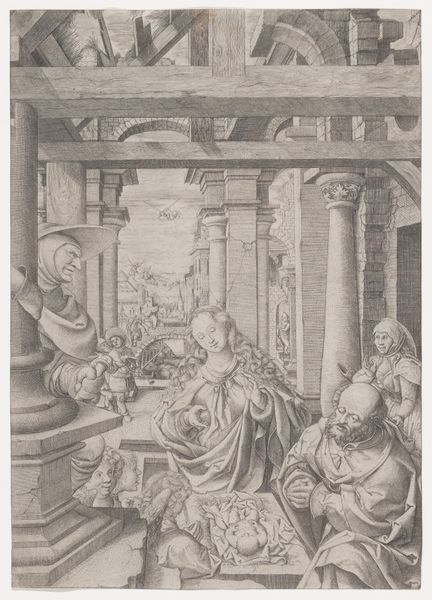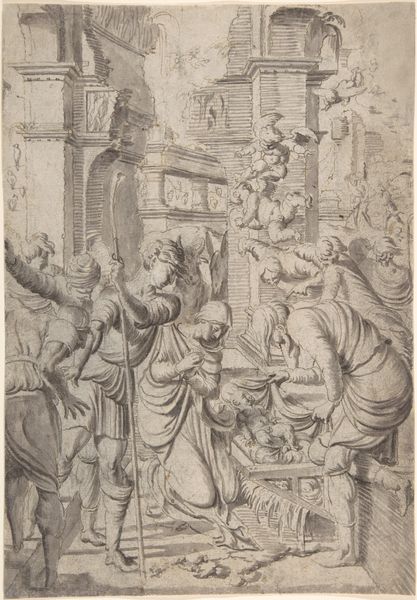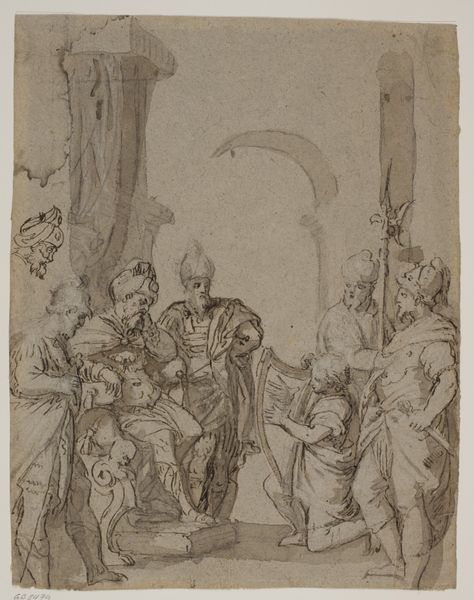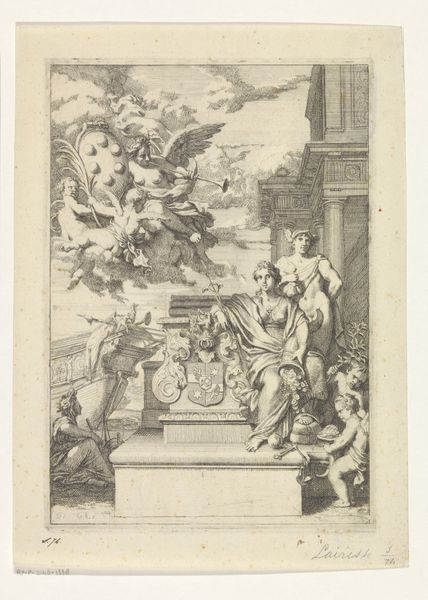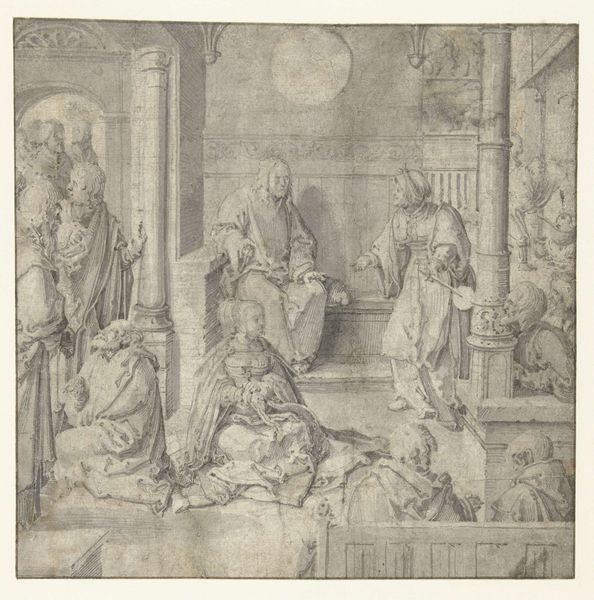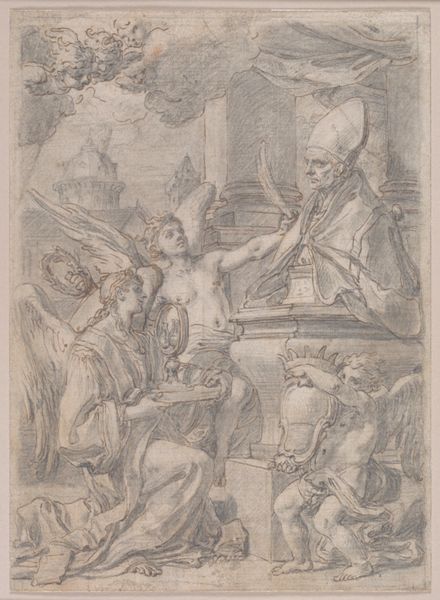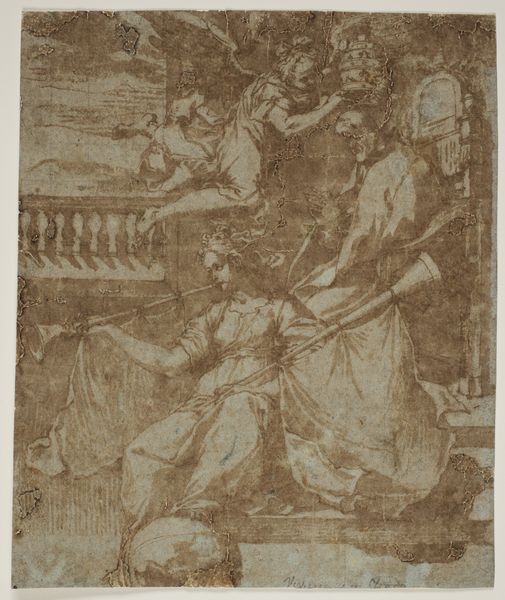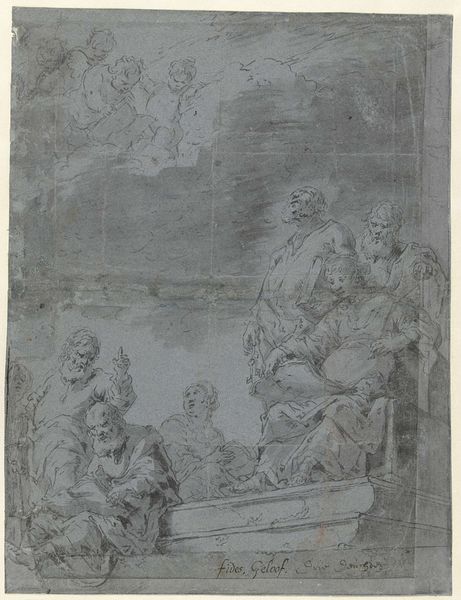
print, engraving
#
baroque
# print
#
figuration
#
line
#
history-painting
#
engraving
Copyright: National Gallery of Art: CC0 1.0
Editor: We’re looking at "The Adoration of the Shepherds" by Frans Crabbe van Espleghem. It's an engraving, done in a very linear style. It feels almost dreamlike, with a very busy composition and figures seemingly emerging from the shadows. What do you see in this piece, from your perspective? Curator: The key, for me, lies in unpacking the visual language at play. The adoration scene itself is rendered within a carefully constructed space. Do you notice the architecture surrounding the figures? How it seems almost to frame them, yet also feels incomplete? Editor: Yes, it’s like a stage, but the backdrop is unfinished, revealing more landscape behind. Curator: Exactly. The incompleteness might speak to the idea of divine revelation occurring in an imperfect world, a world still under construction. The shepherds, often portrayed as simple folk, are bringing gifts. Gifts, in this context, often carry symbolic weight. Are they offerings? Acknowledgements? Expressions of humility before the divine? Editor: That’s a great point. I hadn’t thought about the symbolism of the gifts themselves. They’re not clearly defined. Curator: The lack of clarity could signify that the true value lies not in the object itself, but in the act of offering. The visual repetition of architectural motifs in the background also points towards memory and shared values, reinforcing established power structures and beliefs through its imagery. It’s a dense image, isn’t it? Editor: It really is. I hadn't picked up on those layers of symbolism before. This definitely encourages a deeper reading than I initially expected. Curator: Visual symbols carry a lot of power in works like this; it shapes our understanding of shared cultural memory and meaning, and often, reveals so much about a specific moment in history. Editor: I see that now. Thank you!
Comments
No comments
Be the first to comment and join the conversation on the ultimate creative platform.
